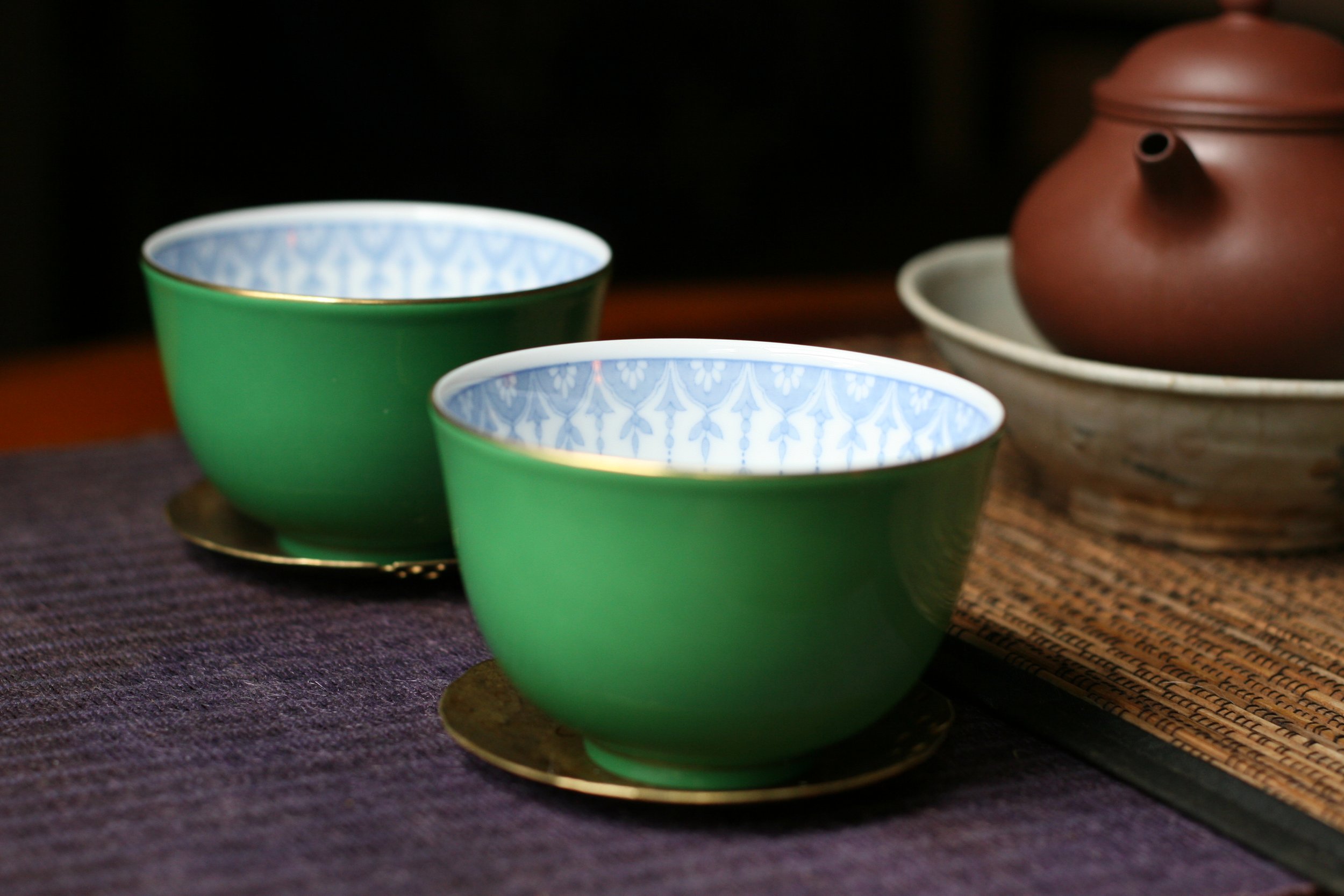 Image 1 of 5
Image 1 of 5

 Image 2 of 5
Image 2 of 5

 Image 3 of 5
Image 3 of 5

 Image 4 of 5
Image 4 of 5

 Image 5 of 5
Image 5 of 5






Tachikichi Kyo yaki green porcelain teacup with blue lace liner on inner rim (51)
Tachikichi Kyo yaki green porcelain teacup with blue lace liner on inner rim. The blue decorative lining is made via a transfer technique. 8.5cm x 5.5cm. Sold individually.
Kyo yaki/Kiyomizu yaki is traditional ceramics made in the area of Kyoto in central Honshu. Although, Kyoto has been a producer of ceramics since the 8th century, modern Kyo-yaki did not emerge until the Edo period (1603-1868). Kyo-yaki is most notable for its wide variety of styles and techniques, ranging from rustic raku ware to very fine and highly-decorated porcelain ware. Specific kilns developed idiosyncratic styles for which they became famous, passing on the techniques for generations. Kyo-yaki does not utilize clay from local sources and, although mass production is common, the ceramics are still handmade using traditional techniques. The refinement and variety of the wares reflect the vibrant cultural hub that is Kyoto.
Tachikichi Kyo yaki green porcelain teacup with blue lace liner on inner rim. The blue decorative lining is made via a transfer technique. 8.5cm x 5.5cm. Sold individually.
Kyo yaki/Kiyomizu yaki is traditional ceramics made in the area of Kyoto in central Honshu. Although, Kyoto has been a producer of ceramics since the 8th century, modern Kyo-yaki did not emerge until the Edo period (1603-1868). Kyo-yaki is most notable for its wide variety of styles and techniques, ranging from rustic raku ware to very fine and highly-decorated porcelain ware. Specific kilns developed idiosyncratic styles for which they became famous, passing on the techniques for generations. Kyo-yaki does not utilize clay from local sources and, although mass production is common, the ceramics are still handmade using traditional techniques. The refinement and variety of the wares reflect the vibrant cultural hub that is Kyoto.
Tachikichi Kyo yaki green porcelain teacup with blue lace liner on inner rim. The blue decorative lining is made via a transfer technique. 8.5cm x 5.5cm. Sold individually.
Kyo yaki/Kiyomizu yaki is traditional ceramics made in the area of Kyoto in central Honshu. Although, Kyoto has been a producer of ceramics since the 8th century, modern Kyo-yaki did not emerge until the Edo period (1603-1868). Kyo-yaki is most notable for its wide variety of styles and techniques, ranging from rustic raku ware to very fine and highly-decorated porcelain ware. Specific kilns developed idiosyncratic styles for which they became famous, passing on the techniques for generations. Kyo-yaki does not utilize clay from local sources and, although mass production is common, the ceramics are still handmade using traditional techniques. The refinement and variety of the wares reflect the vibrant cultural hub that is Kyoto.